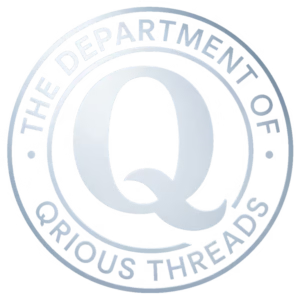The Alluring Bait
Social media is the modern-day siren, seducing us with its symphony of viral content, colour, sound, gossip, titilation, virtual interactions, and visual spectacles. With smartphones as our personal pleasure cruisers, we sail the digital world, vulnerable to the siren’s call and to being left floating in stagnent waters.
Caught in the Dopamine Dragnet
Every “like,” comment, and share on social media triggers a dopamine release in our brains. Dopamine, known as the “feel-good” neurotransmitter, gives us a sense of reward and pleasure. Social media platforms have exploited this neurochemical quirk, designing their products to maximise this dopamine-driven feedback loop, turning us into habitual users — or, more bluntly, addicts. This dopamine fix is often far more attractive than sending that letter you’ve been putting off or doing the washing, but only in the short term.
The Price of Your Attention
As we continually succumb to these dopamine highs, we pay the price with our most valuable currency: attention. Our capacity for deep thinking, creativity, and meaningful connection is compromised. Our mental health becomes collateral damage, with research linking excessive social media use to anxiety, depression, and lower self-esteem. We also find we don’t make the progress we need by completing more mundane things that may have made us smile to complete but a few short years ago.
From Dopamine Hits to Dopamine Fitness
Recognising this dopamine trap, we can hack the system to our advantage. By consciously choosing activities that not only deliver dopamine but also contribute to our personal growth, we can start regaining control. Completing a challenging workout, accomplishing a task, or learning something new can also trigger dopamine release, giving us the same pleasure but with more long-lasting, meaningful benefits.
Choosing High-Value Information
Navigating social media doesn’t mean we have to steer clear of all its waters. We can harness its power by curating our feeds to align with our values and interests. By choosing high-value information that enhances our knowledge, broadens our perspectives, and contributes to our self-improvement, we transform the platform into a tool for personal growth rather than a distraction device.
The Fish or the Fisher: Who Are You?
Social media can turn us into mindless fish caught by the bait, or we can become the fisher, intentionally choosing what we wish to reel in. This choice becomes the crucial determinant of how our time and attention are spent on these platforms.
20 ways to use your phone to improve your life
Meditation Apps: Use apps like Headspace or Calm for guided meditations to reduce stress and improve mindfulness.
Learning Apps: Platforms like Khan Academy, Coursera or Duolingo offer opportunities for learning new languages or skills.
Exercise and Health Apps: Use fitness apps for guided workouts, yoga routines, and tracking your physical health progress.
Healthy Eating Apps: Use apps to track nutrition, find healthy recipes or even order fresh produce.
Sleep Tracking Apps: Understand your sleep patterns and improve your sleep quality with apps like Sleep Cycle or SleepScore.
E-books and Audiobooks: Use apps like Kindle, Audible or Libby to read or listen to books and increase your knowledge.
Financial Management Apps: Use apps like Mint or YNAB for budgeting, saving, and managing your financial health.
Journaling Apps: Use apps like DayOne or Five Minute Journal for maintaining a daily journal for personal growth and reflection.
Task Management Apps: Apps like Todoist or Trello can help you manage your tasks and improve productivity.
Mindmapping Apps: Use apps like XMind or MindNode to organize your thoughts, brainstorm ideas, or plan projects.
Virtual Networking Apps: Use apps like LinkedIn or Clubhouse for professional networking and growth.
Digital Detox Apps: Apps like Freedom or Offtime can help you limit your screen time and digital distractions.
Habit Tracking Apps: Use apps like Habitica or Streaks to track and build beneficial habits.
Mental Health Apps: Apps like BetterHelp or Talkspace offer resources for managing your mental health including therapy options.
Podcast Apps: Use apps like Apple Podcasts or Spotify to listen to informative podcasts on a variety of topics.
Online Course Platforms: Use platforms like Udemy or Skillshare to take online courses in an array of subjects.
Environment Apps: Apps like Oroeco track your carbon footprint and suggest ways to reduce it.
Motivational Apps: Apps like Motivation provide daily motivational quotes and inspiration.
Gratitude Apps: Apps like Happyfeed encourage daily gratitude practices for increased happiness and wellbeing.
Virtual Volunteering Apps: Apps like Be My Eyes or GoodSAM let you offer your help to those in need virtually.
Breaking My Addictions Summary
Strategies like setting boundaries, taking regular digital detoxes, and turning off non-essential notifications can be effective in maintaining control over our social media use.
Following Your North Star
As the final step, align your digital habits with your values. Your “North Star” — the guiding principles that anchor your life — should lead your social media use, not the other way around. Once you manage to do this, you’ll find that social media can indeed be a useful tool, helping you to sail smoothly towards your goals without falling prey to its darker depths.





